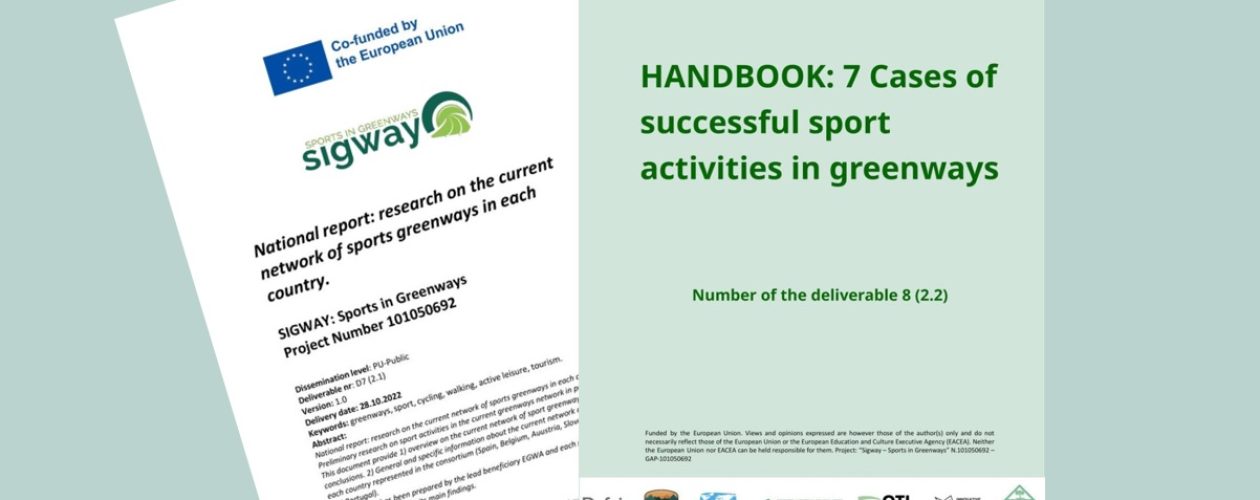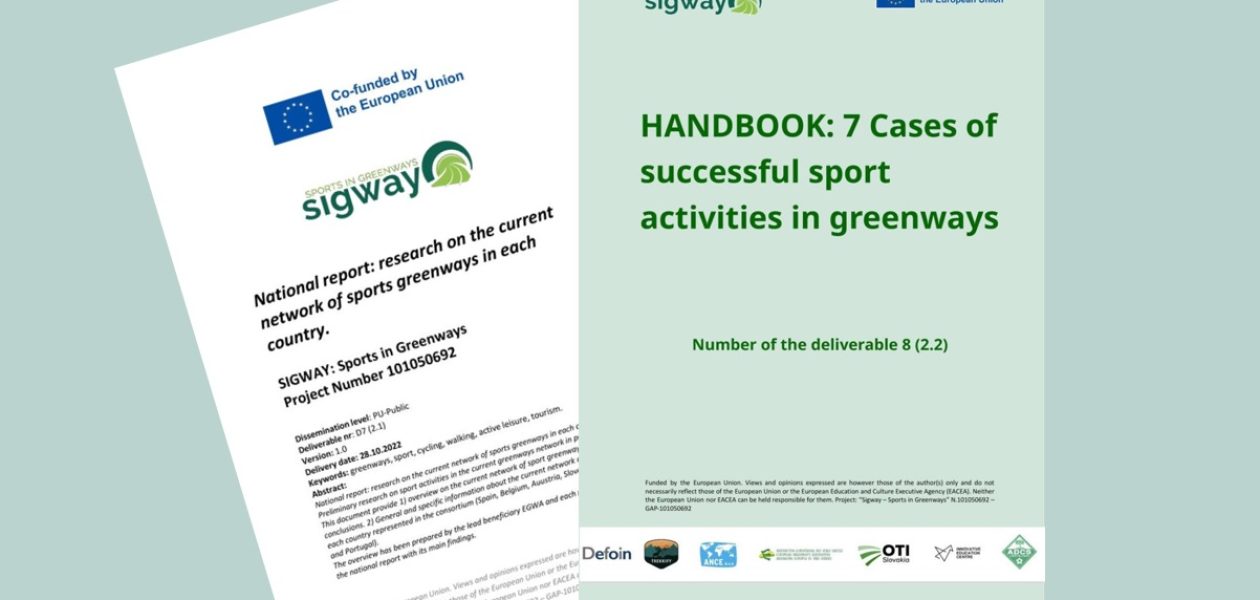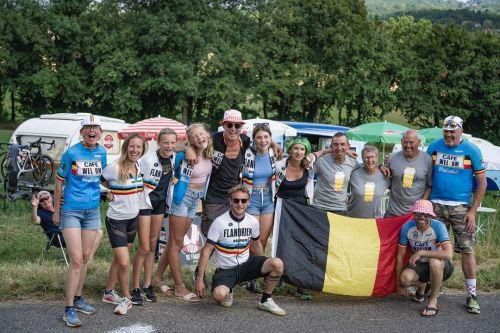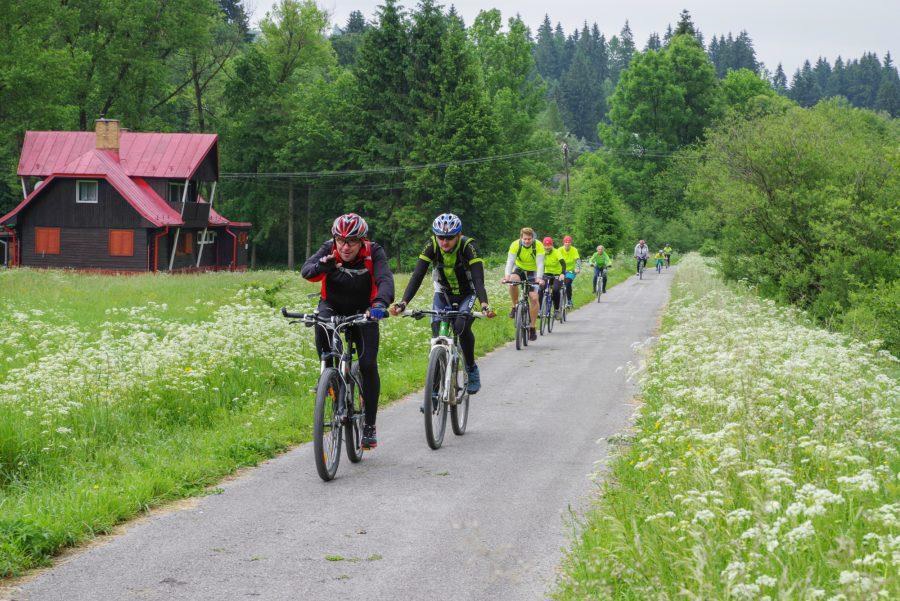The first results of the SIGWAY project are now 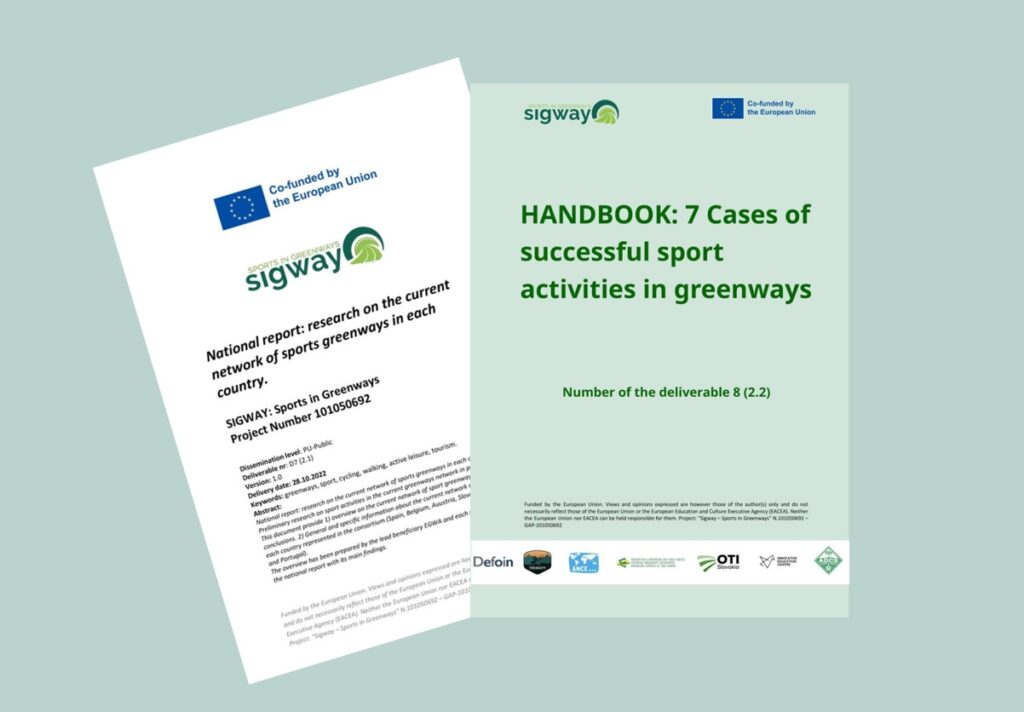 available!
available!
They consist of 2 reports giving an overview of greenways in the 7 countries participating in the project, and examples of good practice in sport and active leisure activities in Spain, Belgium, Italy, Slovakia, Austria, Italy, Greece and Portugal.
Both reports include an introductory summary of the situation in the different countries and best practices, prepared by EGWA, which has guided the research as the lead partner for this part of the work. Each country report has been prepared by the respective project partner, who is responsible for its content.
1/ National report on the current network of sport greenways in each country
The objectives of the report are:
- To have the general information on the existing greenways in each represented country, and the main characteristics of their development.
- To know the specific characteristics that favour the development of outdoor sports and leisure activities in greenways, and what conditions make them successful, through concrete examples.
- Offer a global overview of the situation of the greenways and the sports activities and physical activity that take place in the represented countries.
- Identify outstanding examples of greenways, which can serve as a reference for the transformation of disused railway lines into greenways on which to develop sports programmes and active leisure promoting the circular economy, of which the greenways themselves are a good example due to the reuse of disused railway infrastructure for new uses.
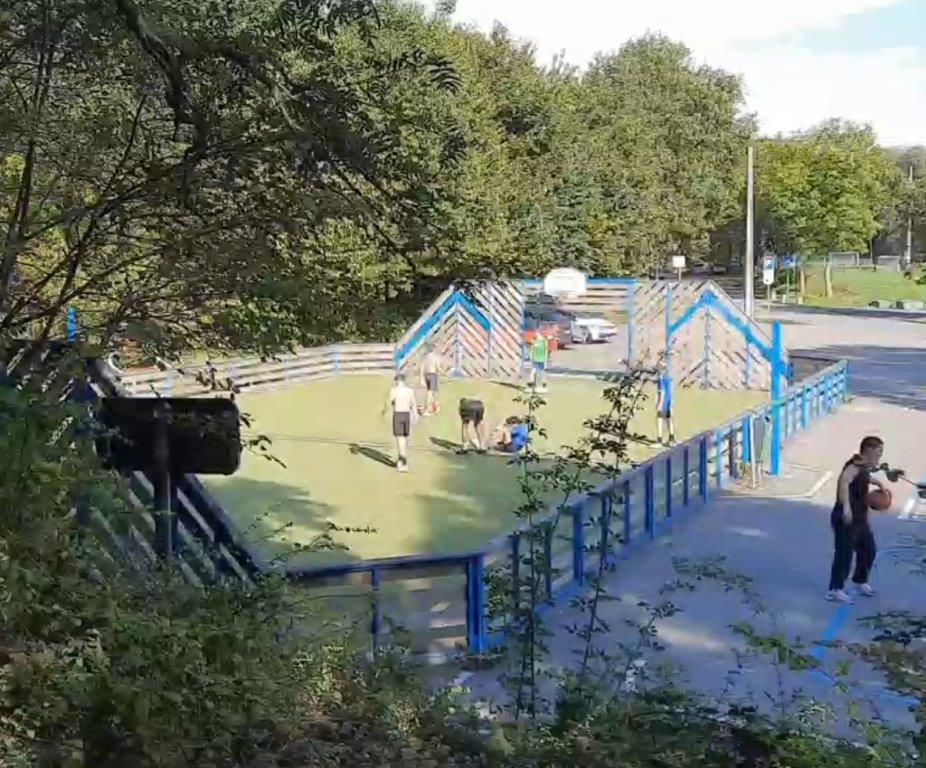
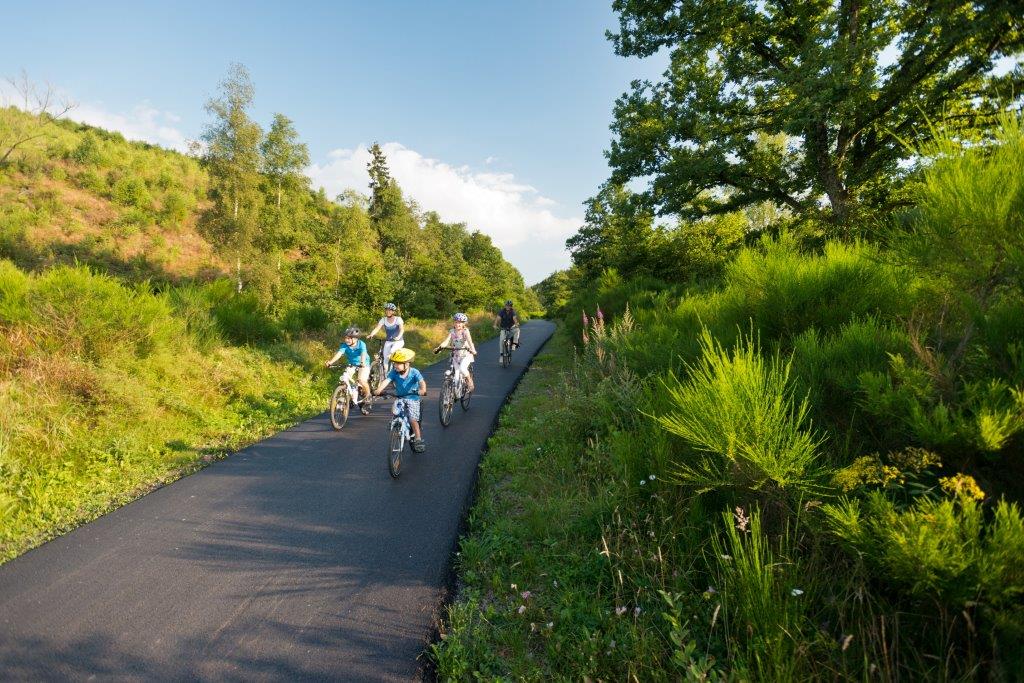
2/ Handbook: 7 cases of successful sport activities in greenways
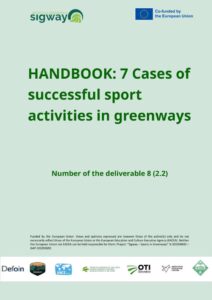
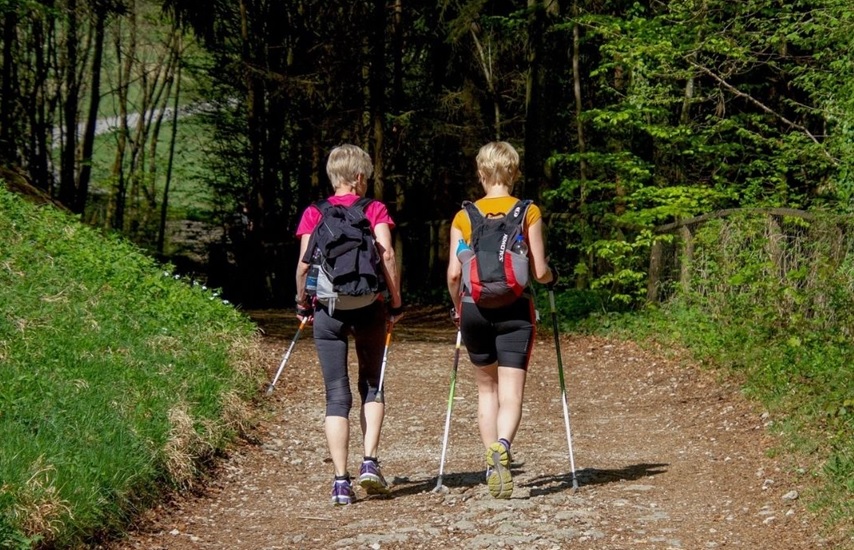 The handbook includes best practices of outdoor sports and leisure activities linked to greenways, in a greater or lesser extent, in Spain, Belgium, Italy, Slovakia, Austria, Italy, Greece and Portugal.
The handbook includes best practices of outdoor sports and leisure activities linked to greenways, in a greater or lesser extent, in Spain, Belgium, Italy, Slovakia, Austria, Italy, Greece and Portugal.
They are very varied activities, open to all kinds of groups, and promoted by different entities, sports, educational, rural development, companies, municipalities and other social, public and private groups, which can serve as inspiration to be performed in other places and promote sport and active leisure activities on greenways and other non-motorised itineraries. The proposed activities are free of charge or at a very low cost, which encourages participation in group activities, which in turn has a very positive impact on the people who take part and on the communities.
We hope that they can also be useful to raise awareness and visibility of the circular economy through the use of old railway infrastructures, into a new purpose, like greenways.
Thanks to these reports which we are now disseminating, and the participation of partners from new countries, we have learned about abandoned railway lines and initiatives aimed at converting them into greenways in countries such as Slovakia and Greece, which we hope can be implemented. We also see how greenways are being deployed across Europe!
The project is enabling to improve the qualification of the project partners in the field of greenways, which is a key objective of ERASMUS. With this, we contribute to the future development of greenways in Europe, as infrastructures suitable for the practice of sport and outdoor physical activities (cycling, walking, nordic walking, …), for young people, women, seniors, people with disabilities that are main SIGWAY target groups, and in general to all the people who use greenways, on a daily basis or for tourism.
>> About SIGWAY project
The Erasmus + project SIGWAY aims to promote sport and healthy leisure activities outdoors by stimulating sports activities offer in greenways and potential greenways, while raising awareness on environmental issues and circular economy. Moreover, SIGWAY aims at enhancing sports field employability and local economies.
The SIGWAY project focuses on greenways of railway origin due to the reuse of old railway infrastructures as an example of new uses and circular economy.
EGWA is the lead partner of the WP 2 that includes the research and mapping, and co-lead the strategy and Guidelines as expert on Greenways and implement all activities of the project.
The Association is also in charge of organising the final conference together with a sports activity on greenways in Belgium (planned for September 2024, to be confirmed).
The project started in May 2022 and will end in October 2024 (30 months).
>> Next steps:
The Interactive Map of Potential Greenways is well advanced, and we will be able to announce its availability very soon.
In the coming months, the focus will be on the preparation of the Sports Programmes adapted to different target groups.
- It includes a Training programme for sport trainers to be held in Slovakia from 27 to 29 June 2023.
- Afterwards, a pilot activity will be organised on a potential or already existing greenway in Belgium (e.g. cycling, hiking, cycling on wheeling, other possible activities targeting young people aged 14-25) (winter, end 2023-early 2024).
- Also we will set up a monitoring group for SIGWAY and greenway sports programmes for young people, to be used at European level.
Although the scope of the EGWA is European and we count with members in 16 counties, actions in Erasmus projects must be carried out in the partner countries of origin. In our case, the actions in the field have to be carried out in Belgium, linked to the country of belonging of the Association, with head office in Belgium (Namur). We are collaborating with all SIGWAY project partners, and we have encouraged them to get in touch with our local EGWA members to reinforce synergies.
But in order to give the opportunity to participate in the project all our members, we proposed to open the focus group at European scope, and therefore we will make a call to participate in the monitoring group to all EGWA members in the coming months. The objective will be to analyse and propose implementation possibilities to enhance local economy and revitalize abandoned areas trough greenways and sport and physical activities.
The objective is to make the SIGWAY project useful for all EGWA members and greenway stakeholders, actual and potential; to achieve the highest visibility of greenways and to promote the replication of good practices, in this case linked to sport and physical activity, in other territories, that count with this great asset that are greenways or abandon railway lines, than can become safe, accessible, and user friendly infrastructures for cycling, walking wheeling for all.
=> Do you organise greenway activities for young people? Do you want to contribute to the SIGWAY project participating in the monitoring group? Do you have any comments, information to share, please let us know! sigway@aevv-egwa.org #SIGWAY
=> See full project information here: www.sigway.eu
=> https://www.facebook.com/sigwayEU Instagram: @sigway_eu
=>Further info also in the EGWA web site here.
>> Acknowledgements:
Isabelle Dullaert (SPW-MI), Gilbert Perrin, and Morgane Halle (Chemins du Rail) for their collaboration in identifying greenways based in former railways in the Walloon region, of major interest for sporting activities. Special thanks to Isabelle Dullaert, for her help on identifying specific information on sporting initiatives, support in the photographic reportage of the Wallonie, and on-going and potential greenways info.
Christoph Hendrich (Vennbahn greenway) for checking information on the Vennbanh sharing photos and facilitating contact with experts on sports activities in the East Belgium.
Kris Rockele, Eva Turcott, (Antwerp province) for her information on greenways in Flanders, for which a specific GIS exploitation has been carried out; reiterated to Kris for her identification of sporting BPs, with the cooperation of Karen Verboken from Merode.
All of them are members of the EGWA, and without their precious help it would not have been possible to prepare the reports. Working togheter to promote greenways in Europe!
—-
Mercedes Muñoz Zamora
European Greenways Association, Director
SIGWAY project partner
06/March/2023
Credit photos: © EGWA; Vennbahn; Enkarterrialde; Café Welkom Cycling club; Cyklokorytnička

